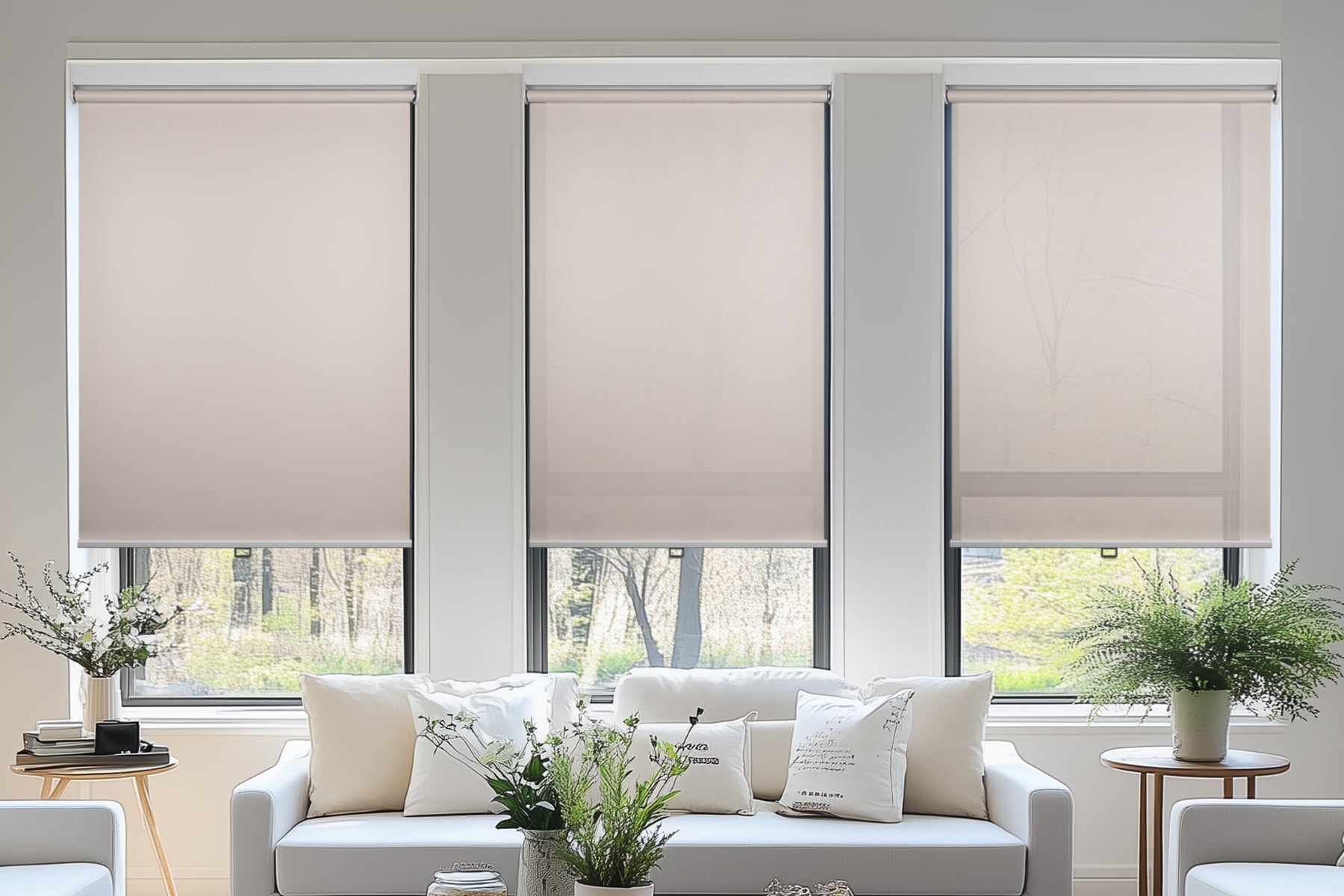“Blackout shades claim to block all light—but do they really? And why would anyone pay extra for ‘light filtering’ shades when sheer curtains exist?”
If you’ve ever squinted at a product description, wondering how much darkness a “room darkening” window shade actually delivers, or questioned whether “blackout” is just marketing fluff, you’re not alone. The world of window treatments is riddled with jargon that leaves even seasoned homeowners scratching their heads:
- Can a shade truly turn your bedroom into a pitch-black sleep haven?
- What’s the point of “filtering” light instead of blocking it completely?
- And why do some shades cost three times as much as others for what seems like the same fabric?
The answers aren’t just about percentages or fabric thickness—they’re about how you live. Whether you’re battling glare on your work-from-home setup, protecting a newborn’s nap schedule, or simply trying to keep your sofa from fading in the sun, the right shade acts as a silent guardian of your comfort.
In this guide, we’ll dissect blackout, room darkening, and light filtering window shades and blinds in detail. By the end, you’ll know exactly which type turns your daily light struggles into a thing of the past—no jargon, just clarity.
Blackout Shades and Blinds

Blackout window treatments are engineered to block nearly all incoming light, achieving up to 95–100% opacity. Constructed with dense fabrics, multiple layers, or light-resistant backings, they transform rooms into dark havens ideal for sleep or media consumption. Think hotel-grade darkness where midnight looks identical to noon. They’re the go-to solution for anyone craving total light elimination.
Key Advantages:
- Blocks 95-100% of light for circadian rhythm-friendly sleep
- NSA-level privacy day and night
- Reduces outside noise by up to 40%
- Slashes cooling costs by 25% in sunbelt states
- Prevents UV damage to photos and artwork
Room Darkening Shades and Blinds

Room darkening window treatments strike the perfect balance between ambiance control and functional design, blocking 80–95% of incoming light. Unlike their blackout counterparts, they use tightly woven fabrics, semi-opaque materials, or strategic slat designs to soften sunlight without erasing it completely. Imagine transforming a glare-filled living room into a cozy den where late afternoon feels like dusk—ideal for naps, movie nights, or reducing screen glare. These treatments cater to those who want substantial light reduction while maintaining a connection to the outside world’s natural rhythm.
Key Advantages:
- Filters harsh glare
- Enhances sleep quality without total darkness
- Maintains privacy without "cave-like" aesthetics
- Damps street noise by 25–30% through layered textiles
- Cuts solar heat gain by 15–20%, easing HVAC strain
- Protects furnishings from UV fading with partial light diffusion
Light Filtering Shades and Blinds

Light filtering window treatments act as nature’s softbox, diffusing harsh sunlight into a gentle, even glow while allowing 50–80% of visible light to permeate your space. Crafted from sheer fabrics or translucent materials, these designs prioritize ambiance over obstruction—think of sunlight streaming through morning clouds rather than glaring off bare windows. They’re ideal for spaces where you want softened daylight without sacrificing your connection to the outdoors, like sunlit kitchens, airy living rooms, or creative studios.
Key Advantages:
- Softens harsh UV rays while maintaining bright, airy interiors
- Reduces eye strain by diffusing harsh glare while keeping rooms bathed in natural light—ideal for home offices or binge-watching without screen reflections
- Provides daytime privacy without shutting out the world (no “peeping Tom” silhouettes!)
- Protects hardwood floors and upholstery from UV fading, minus the cave effect
- Minimalist designs enhance decor with texture (think linen, bamboo, or solar shades)
What’s the Difference?
Think of light control like your morning coffee order: blackout is a triple espresso (no light, no mercy), room darkening is a latte (smooth with a dash of ambiance), and light filtering is a matcha tea (gentle glow, zen vibes). To decode which “brew” suits your space, let’s break it down:
| Factor | Blackout | Room Darkening | Light Filtering |
|---|---|---|---|
| Light Filtering | 95%-100% | 80%-95% | 50%-80% |
| Effect | Vampire-approved. Total eclipse mode. | Dims sunlight to "cozy dusk" levels. | Sunlight in a cashmere sweater. |
| Best For | Night shift workers, nursery naps, basement home theaters | Light sleepers, midday movie marathons, east-facing bedrooms | Plant parents, Zoom call warriors, sunlit dining rooms |
| Aesthetic Vibe | “Hotel suite chic” – sleek, heavy-duty | “Modern hygge” – soft diffusion | “Airy minimalist” – breezy texture |
| Material MVP | Thermal-backed fabrics, triple-weave layers | Tightly woven linen, semi-opaque cellular shades | Sheer linen, bamboo blinds |
Factors to Consider When Choosing Between Blackout VS Room Darkening VS Light Filtering
Picking the right window treatment isn’t just about blocking light—it’s about solving your specific life problems. Are you a vampire, a nap enthusiast, or a houseplant influencer? Let’s decode which shade tier matches your drama level, using these four real-world factors:
Room Function

A room’s purpose is its lighting résumé—every window treatment should align with its daily agenda. Take bedrooms: they demand a Goldilocks approach to darkness. Blackout shades become non-negotiable for parents surviving the toddler “5 AM wake-up” era or urban dwellers battling neon street signs, while room darkening caters to light sleepers who still want a subtle sunrise nudge.
Shift to living rooms, where versatility reigns. Here, room darkening shades act as a Swiss Army knife—softening midday glare for screen-heavy movie marathons yet allowing enough ambient light for evening book clubs. Meanwhile, sun-drenched spaces with fiddle leaf figs or mid-century furniture lean into light filtering to protect plants and wood finishes without sacrificing that “Golden Hour” Instagram aesthetic.
Kitchens and bathrooms play by different rules. In kitchens, light filtering shades are the unsung heroes: they diffuse harsh morning light that turns stainless steel sinks into blinding mirrors, while blocking just enough UV rays to prevent your countertop olive oil from going rancid. Bathrooms, however, prioritize privacy. Blackout and room darkening shades and blinds offer daytime shower privacy (no neighborly glimpses of your shampoo ballet).
Privacy

Window shades and blinds aren’t just your sunlight controller—they’re also your home’s VIP privacy sentry! For folks in ground-floor pads or homes overlooking busy streets, picking window treatments with top-tier "privacy armor" is non-negotiable. Enter blackout and room darkening options—the superheroes of window coverings. Imagine this: 100% snoop-proof protection that lets you binge-dance to cheesy playlists, host living-room karaoke marathons, or rock pajamas all day—zero judgment from nosy neighbors. It’s like your home gets its own invisibility cloak. Privacy level: Fort Knox meets chill mode.
Heat Insulation

Your window treatments can do more than just control light and privacy! They're stealthy temperature warriors battling your energy bills 24/7. Shades like room-darkening and blackout options serve as thermal regulators for your living space—effectively trapping warmth during winter months while deflecting solar heat in summer. The secret weapon? Honeycomb shades with their patented cellular design. By maintaining consistent indoor temperatures year-round, they not only enhance comfort but actively reduce HVAC strain—translating to measurable savings on your energy bills season after season.
Budget
Let’s get real—while light-blocking power isn’t the only thing that determines your window coverings’ price tag, it’s definitely the star of the show. Higher opacity shades require heavyweight fabrics and more intricate craftsmanship, which means you’ll pay a premium for that hotel-room darkness. Here’s the average cost range for each option:
| Type | Avg. Cost per Window | Long-term RO1 |
|---|---|---|
| Blackout | $120-$400 | High (energy savings, protects furniture) |
| Room Darkening | $80-$250 | Moderate (balanced perks) |
| Light Filtering | $50-$150 | Low (but high decor points) |
Product Options
Alright, so you’ve got the lowdown on what different levels of light blocking mean and how to pick the right one. But what blinds are actually out there for you to choose from? Now, let’s dive into some top window covering options!
Roller Shades
Roller shades are a stylish and practical window covering option, featuring a single sheet of fabric that rolls up neatly around a tube. Modern roller shades often include weighted bottom bars and side tracks, ensuring a crisp and clean alignment every time. Hestia roller shades offer versatile light control with both blackout and light-filtering options. Blackout roller shades are perfect for those who need maximum light control, effectively blocking out natural sunlight to create a serene, dark environment.
If you love the sleek, minimalist look of roller shades but prefer a bit of natural light, consider solar shades. These window shades are crafted from special fabrics, often woven from materials like polyester or fiberglass coated with PVC. Solar roller shades provide excellent UV protection while still allowing you to enjoy natural light and maintain your view of the outdoors. It's the perfect balance of functionality and style!
Zebra Blinds

Cellular/Honeycomb Shades

Venetian Blinds

Venetian blinds are timeless window coverings made of horizontal slats (typically wood, aluminum, or faux wood) that tilt to adjust light. Rotate the slats to diffuse sunlight or close them completely for room-darkening privacy. While standard designs reduce glare and soften light, some models offer blackout options with thicker slats or fabric-backed slats to block 100% of light. For folks who want it all—blackout-level privacy, moody light play, and a sleek upgrade—Venetian blinds are the MVP of window coverings.
The Final Cut
Choosing between these light control options isn’t about “better” or “worse”—it’s about which one turns your specific daily battle with light into a non-issue. Whether you’re protecting a newborn’s nap, preserving a vintage rug, or just trying to see your laptop screen without squinting, there’s a shade that works like a silent, stylish bodyguard.



Share:
Corded and Cordless Blinds: Choosing the Best Solution for Your Home
Spring Promotions Quick Purchase Guide